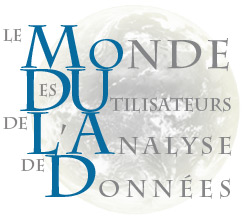Association de la génération procédurale et des algorithmes génétiques pour modéliser la croissance urbaine
In EGC 2025, vol. RNTI-E-41, pp.63-74
Abstract
This paper proposes a method for modelling and optimising spatial influences in agentbased
models by combining procedural generation with a genetic algorithm. Applied to an
urban growth model, this method enables agents, representing residents, to make decisions
based on their environment (e.g., proximity to roads encouraging construction). Procedural
generation aids in modeling these influences, but the complexity of manually adjusting the parameters
necessitates the use of a genetic algorithm for automatic optimization. The approach
examines three spatial measures—Chamfer distance, kernel density, and density grid—to train
the model and simulate the location of new housing. Experimental results demonstrate the
method's effectiveness, generality, and the critical role of fitness functions.
- 74

